Laser cutting plastic is a highly efficient and precise process that relies on the utilization of a CO2 laser beam. The CO2 laser beam is known for its exceptional energy absorption capabilities. When its beam interacts with the plastic material, it rapidly heats up. This intense heat causes the plastic to vaporize. This vaporization process allows for a clean and accurate cut.
The laser power plays a crucial role in determining the quality of the cut. By adjusting the laser power, the operator can achieve different outcomes based on the specific plastic being worked with. It is essential to find the optimal balance
- Too much power can result in excessive melting and unwanted deformation
- Insufficient power may lead to incomplete cuts
One of the significant advantages of laser-cutting plastic is the ability to achieve smooth and precise edges. The focused CO2 laser beam enables the material to be cut with utmost accuracy. It ensures straight and clean edges. This level of precision is particularly beneficial in industries such as packaging, electronics, and automotive.
You must know that not all plastic cutting is possible with laser cutters. Some produce toxic fumes when the cutter beam heats them. These fumes are dangerous for human health.
This article is a comprehensive guide about laser cutting plastic. It will include how it works, the best plastic type, and the best laser cutter machines for plastics. Let’s move on to explore it in more detail.
What is the process of Laser Cutting Plastic Material?
The process of laser cutting plastics (PMMA, acrylic, polycarbonate, ABS, polypropylene, Delrin, polyamide, POM, polyester, and polyethylene) involves several important considerations to ensure optimal results. One crucial factor is the thermal stability and strength of the material. Different plastic compositions may exhibit varying behaviors during the cutting process. But the fundamental procedure remains consistent for all plastic materials.
Plastic material is cut with a highly focused laser beam. It heat the material and due to this heat up, it eventually evaporates. As a result, it creates a precise cut. This process is similar to laser engraving. Although when engraving plastic, the depth of the engraving is typically limited to a maximum of 0.005 inches.
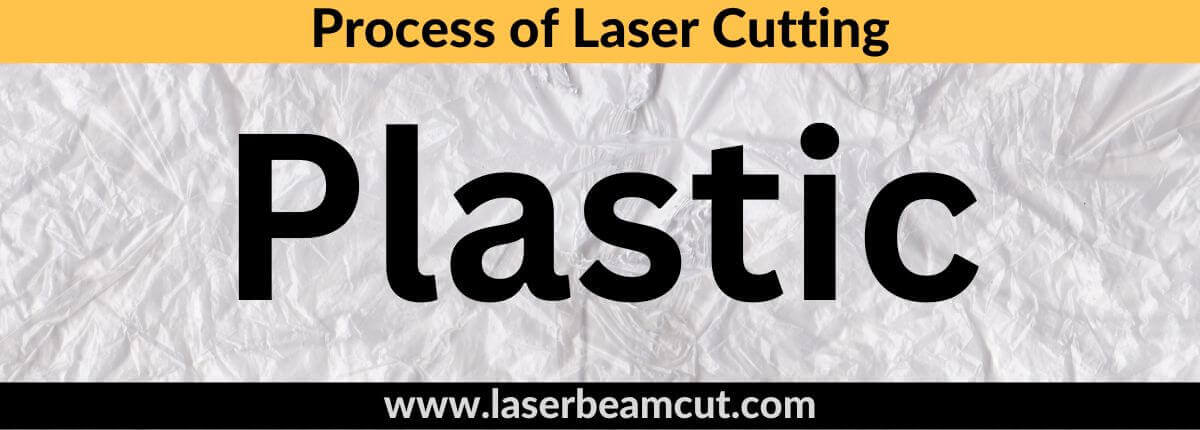
The quality of the cut achieved in laser cutting plastic depends on several factors. These factors include
- Type of plastic
- Machine cutter Type
- Power of the laser machine
Each of these elements plays a role in determining the overall quality and accuracy of the crystal-clear edge cut.
Laser cutting of plastic materials not only ensures quick and precise results but also maintains the highest quality standards. The setup time for laser cutting is minimal. It eliminates the need for complex tooling or extensive manual adjustments. It can be precisely controlled to cut across multiple plastic pieces consistently and accurately. The process is also highly repeatable and ideal for mass production.
It is important to select the appropriate machine cutter and laser power based on the specific plastic-type material. Different plastics may have different cutting requirements. Choosing the right combination of cutter type and laser power ensures the best possible outcome.
Plastic Types for Laser Cutting
Acrylic Plastic
Acrylic is a thermoplastic material. It gives excellent results by laser cutting and engraving techniques.
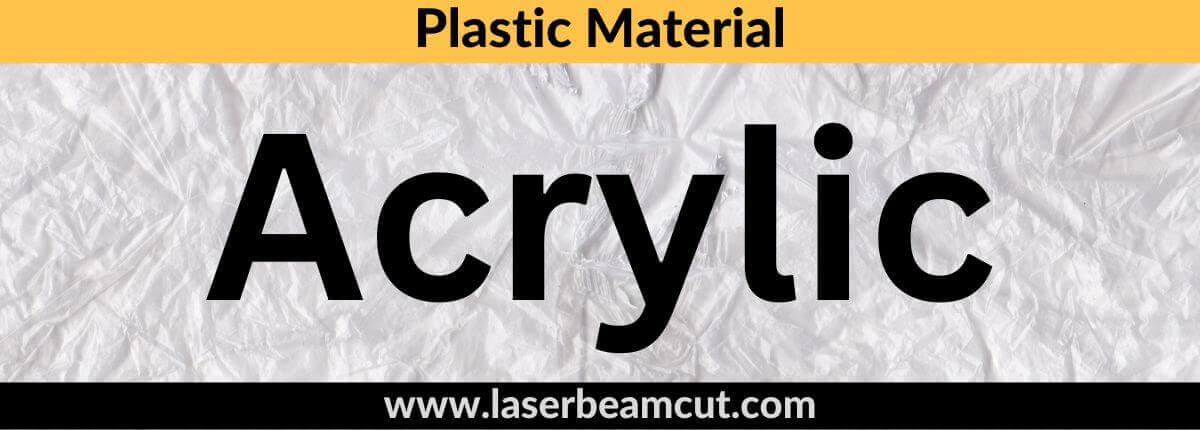
Acrylic laser cutting produces clean and flame-polished edges. It is a hard plastic. So it needs high power beams to cut them. Generally, 60W CO2 lasers are best to cut these types of materials. These cutters can cut up to 6mm (0.23″) thick acrylic sheets. Its melt temperature is 130°C.
This material produces fumes through the lasering process. But these fumes are not harmful to human beings. To maintain a safe working environment, proper exhaust systems should be used.
There are two types of acrylics:
- Cast acrylic – Best for cutting
- Extruded Acrylic – Best for engraving
Polypropylene
Polypropylene is a thermoplastic material. It melts instantly and produces a gooey mess paste at high temperatures. It also produces harmful fumes under heating. So, efficient ventilation systems can make it a safe material for laser cutting.

For cutting Polypropylene, we use optimal laser settings that can work with this material and keep it safe.
When cutting polypropylene using laser machines, the ideal choice is a CO2 laser with a power rating of 40W or higher.
For a safe working environment, it is recommended to use high-volume air assist. It keeps material from melting and heat-affected zones.
Delrin (Polyacetal)
Delrin is also called polyacetal. It is chemically called polyoxymethylene thermoplastic. It uses in toys, seals, mechanical parts, etc.
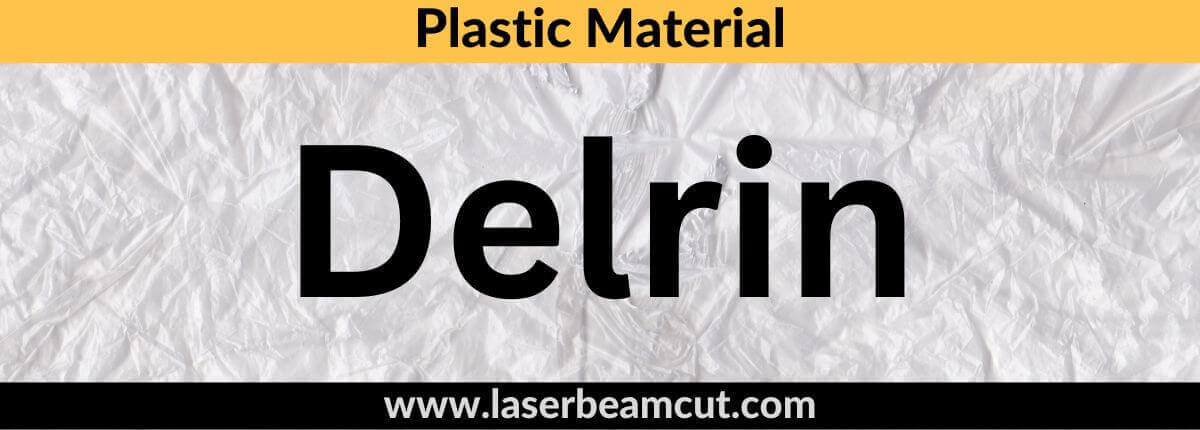
Delrin is a tough and strong plastic material. A powerful laser of at least 80W CO2 is ideal for laser cutting. It gives precise and fine-cut edges.
We can use low-power machines at low speed, but it does not give such a surface finish that high-power can provide.
It produces mild fumes of non-toxic formaldehyde during the cutting process. These are unpleasant if inhaled.
Mylar
Mylar is a polymer plastic. It is made from PET (Polyethylene terephthalate).
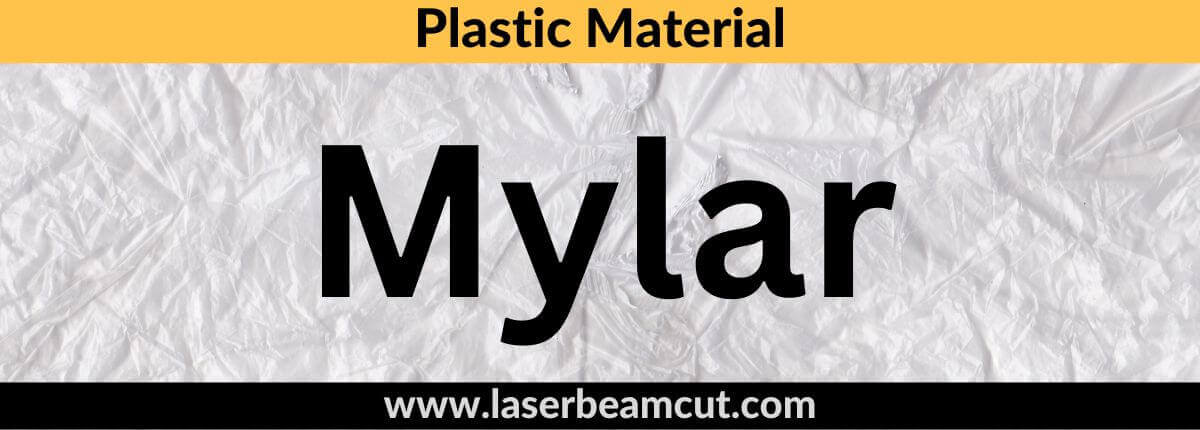
Mylar is a durable material that mostly comes in thin-flexible sheets. It uses in making stencils.
Laser machines can easily cut these thin plastic sheets. K40 laser cutter is ideal for mylar for cutting, marking, etching, and engraving operations.
Cutting Stencil mylar thin sheets are not ideal with powerful K40 cutters. These can overheat these mylars. And it can deform its structure. So, you can cut it by using multiple passes techniques or by raster engraving process.
It is a safe material for cutting. It produces harmless fumes. But you should use a proper ventilation system and air assistance for plastic materials for a safe working environment.
Fluoropolymers
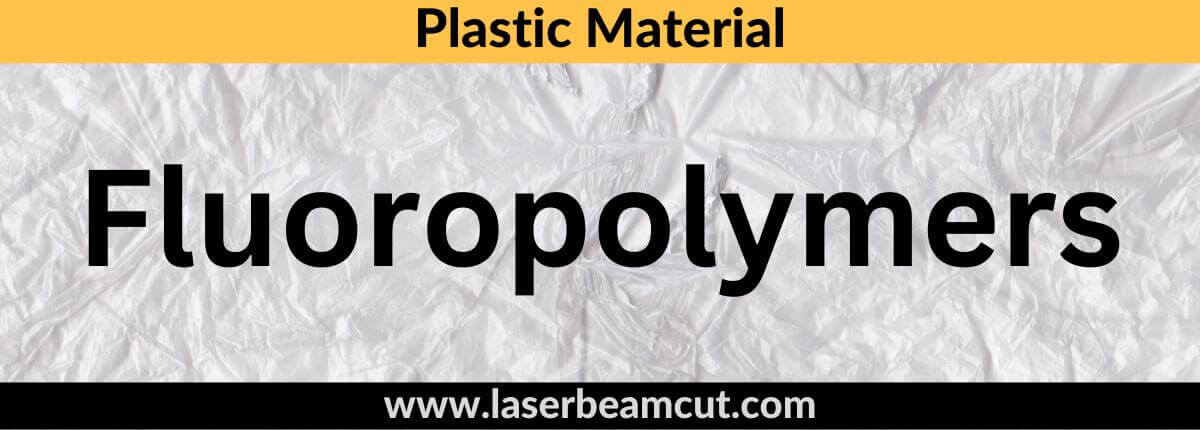
These are natural polymers. The fluoropolymer’s name originates from the fact that fluoro is one of the main components of these plastics.
It has various properties that make it safe for numerous applications. Their properties are
- Temperature resistant
- Friction resistant
- Flame resistant
A typical example of these plastics is Teflon material. A majority of household stencils use it to give them a non-stick coating.
A powerful laser machine is required for precision and clean cuts in these materials because they are dense.
Polyimide
It is a thermoplastic material and resists temperatures. Due to this, it is not ideal for laser cutting.
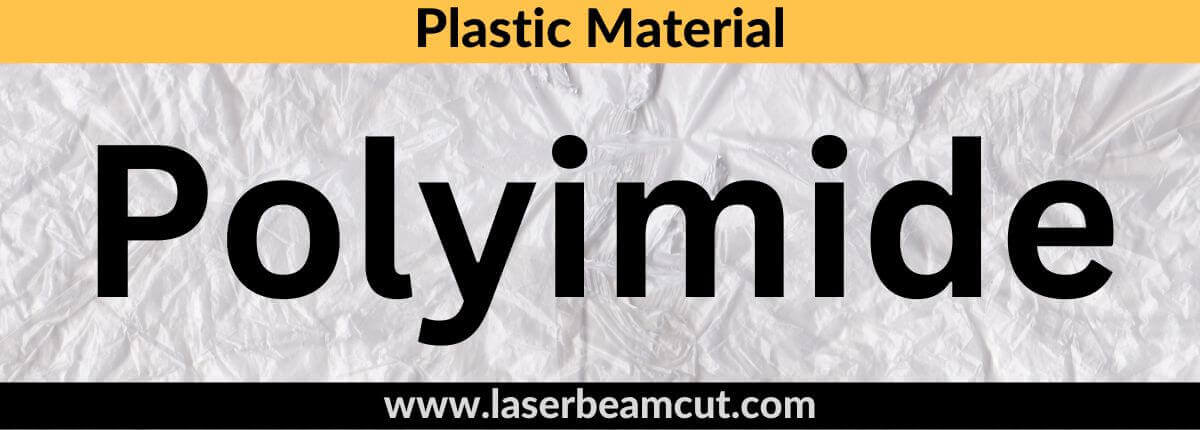
This material has excellent mechanical properties but gives poor cut results with charred edges. So it is not ideal for cutting. But you can engrave it with laser engraver machines. You can engrave serial numbers and barcode tags on these materials.
Polycarbonate

Polycarbonate is a thermoplastic material known for its exceptional properties. It is a tough, high-strength, impact-resistant, and transparent material. It allows light to pass through with minimal distortion.
Polycarbonates exhibit discoloring after laser cutting. It leads to a yellowish shade at the edges of the cut material.
Due to this, it is not suitable for laser cutting. But you can use laser engraving or marking processes for these types of plastics.
Laser Types for Cutting Plastic Materials
Laser cutters come in various types such as fiber, CO2, Diode, etc. Not all lasers are suitable for cutting plastic materials. Generally, CO2 and diode lasers are ideal for plastics.
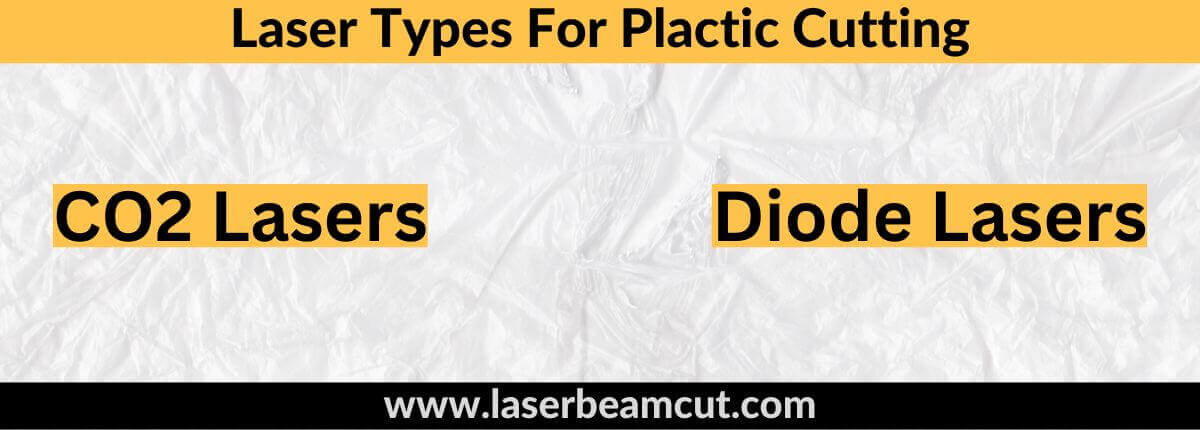
CO2 lasers use CO2 gas as a medium of the laser, having a wavelength of around 10600 nm. That type of cutter laser is easily absorbed by laser and hence best for cutting, engraving, and marking operations.
Diode lasers (wavelength range 450nm-950nm) are best for cutting plastic materials. These lasers are not suitable for transparent plastics. It is due to their beams passing through the material without affecting them.
On the other hand, fiber lasers are not suitable for laser cutting plastic materials as their wavelength are high than CO2 and diode lasers.
Never Cut These Plastics with Laser Machines
We have discussed seven types of plastics within this article. From these plastics acrylic is the best one for laser cutting operations.
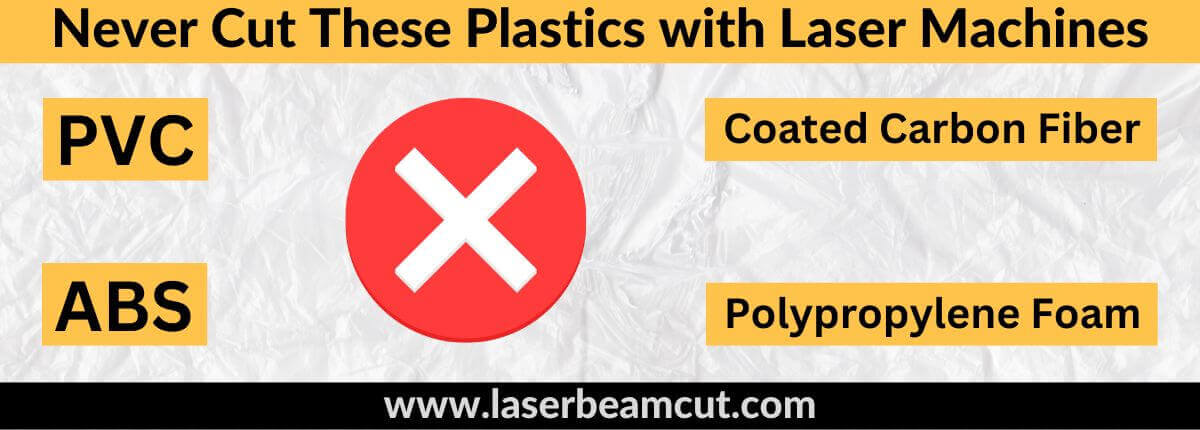
But few plastics are not suitable for laser cut. Such plastics produces harmful fumes when these get heat under lasering. Such types are
PVC
PVC is the acronym for polyvinyl chloride. It is thermoplastic and has various applications. It commonly uses in our surroundings such as in plumbing pipes, electrical wiring pipes, and other household applications.
But it is not safe for laser operations. It is due to the vinyl content in PVC. When it comes under lasering operations, it generates harmful fumes of chlorine gas. And these are toxic if someone inhaled them.
It is also not suitable for machine equipment as it is dangerous for human beings. When these fumes react with the atmosphere, these releases hydrochloric acid. Such acids in the atmosphere damage the machine equipment.
ABS
ABS is a thermoplastic material. It is the acronym for Acrylonitrile Butadiene Styrene. It produces harmful fumes of hydrogen cyanide under lasering operations.
So this type of plastic is not suitable for laser cutting.
Coated Carbon Fiber
These are lightweight plastics and are easily evaporated under laser operations. So the risk of fire sustains under operation.
It also produces toxic fumes which would be harmful for machine operators. That’s why such types are listed in never cut these plastics by laser cutters.
Polypropylene Foam
Polypropylene Foam mostly uses in packaging and insulation applications.
When it cuts by laser cutters, it melts and sticks to the worktable. Due to this, it is not suitable for laser cutting machines.
Safety Precautions to Follow When Laser Cutting Plastics
As plastic materials are not tough to cut by lasers as metals. But you should follow safety precautions for laser operations to keep the working environment safe.
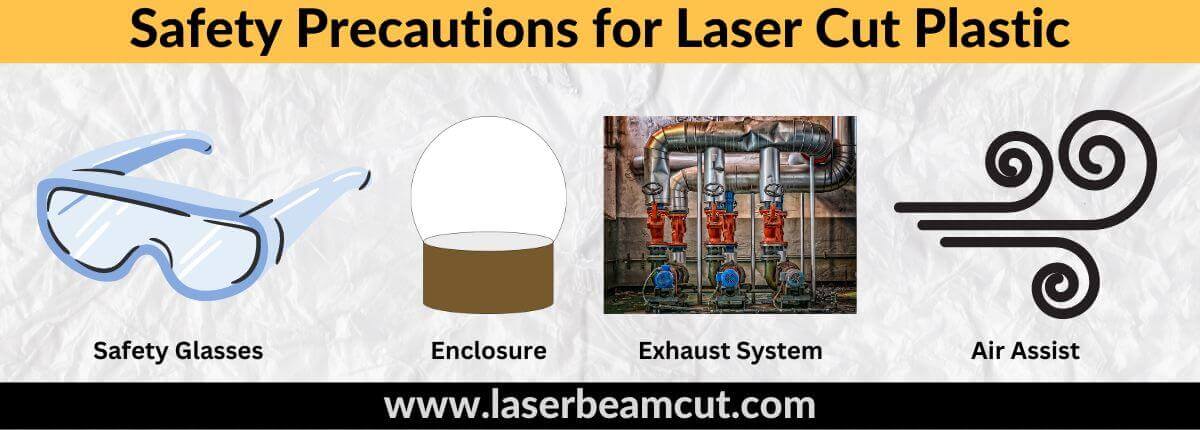
However, it’s important to note that laser cutting does produce a heat-affected zone (HAZ) along the cut path. The heat generated during the process affects the surrounding material. Due to this resulting in some degree of thermal alteration took place. While the HAZ is generally minimal in plastic cutting. It is crucial to consider this factor when working with heat-sensitive plastics or when aiming for a minimal HAZ requirement.
Laser Safety Glasses
As lasers have high intense beams which may be dangerous for human eyes. So laser safety glasses are essential equipment for laser operators.
Few lasers are safe but generally, it is recommended to wear these glasses during machine work.
Safety Enclosures
Plastic produces fumes under laser operations. To keep a safe working environment, we must have a safe machine enclosure.
Exhaust System
It is the most important equipment for plastic materials under laser operations. It throws smoke out from the machine surroundings, which keeps operators inhaling safe.
Air Assist
Air Assist is necessary for such plastics that need to take away their molten paste out of laser kerf. It keeps the machine safe as instantly heated molten plastic gets out from it by using an air assist.
Air Assist also helps the machine operator in breathing. Therefore, it is recommended for laser machine operators for working on plastics.
Final Wording
Plastics are common materials that have numerous applications. Laser-cutting plastic is the best option for making various designs of such materials.
Few plastics are safe for lasering operations but not all types. So be aware with full deep knowledge about their behaviors under lasers.
CO2 and diode laser cutters are best for cutting plastic materials. Before using these machines for plastics, must know the safety precautions to keep working in the safe zone and keep your machine safe from hazards.
FAQs
1. Can you cut plastic with a laser engraver?
Ans: Yes, you can cut plastic with a laser engraver. Diode lasers, especially low-powered ones, are more suitable for engraving plastic materials. However, they can also be used to cut very thin sheets of non-transparent plastics in multiple passes.
2. How thick can plastic be laser cut?
Ans: Plastics can be laser cut with a maximum thickness ranging from three-sixteenths to one-quarter inch.
3. What is the alternative cutting method for plastics that are not suitable for laser cutting?
Ans: Cricut is the best alternative. It is a process in which a CNC machine uses a sharp blade to cut these materials without changing their phase.

